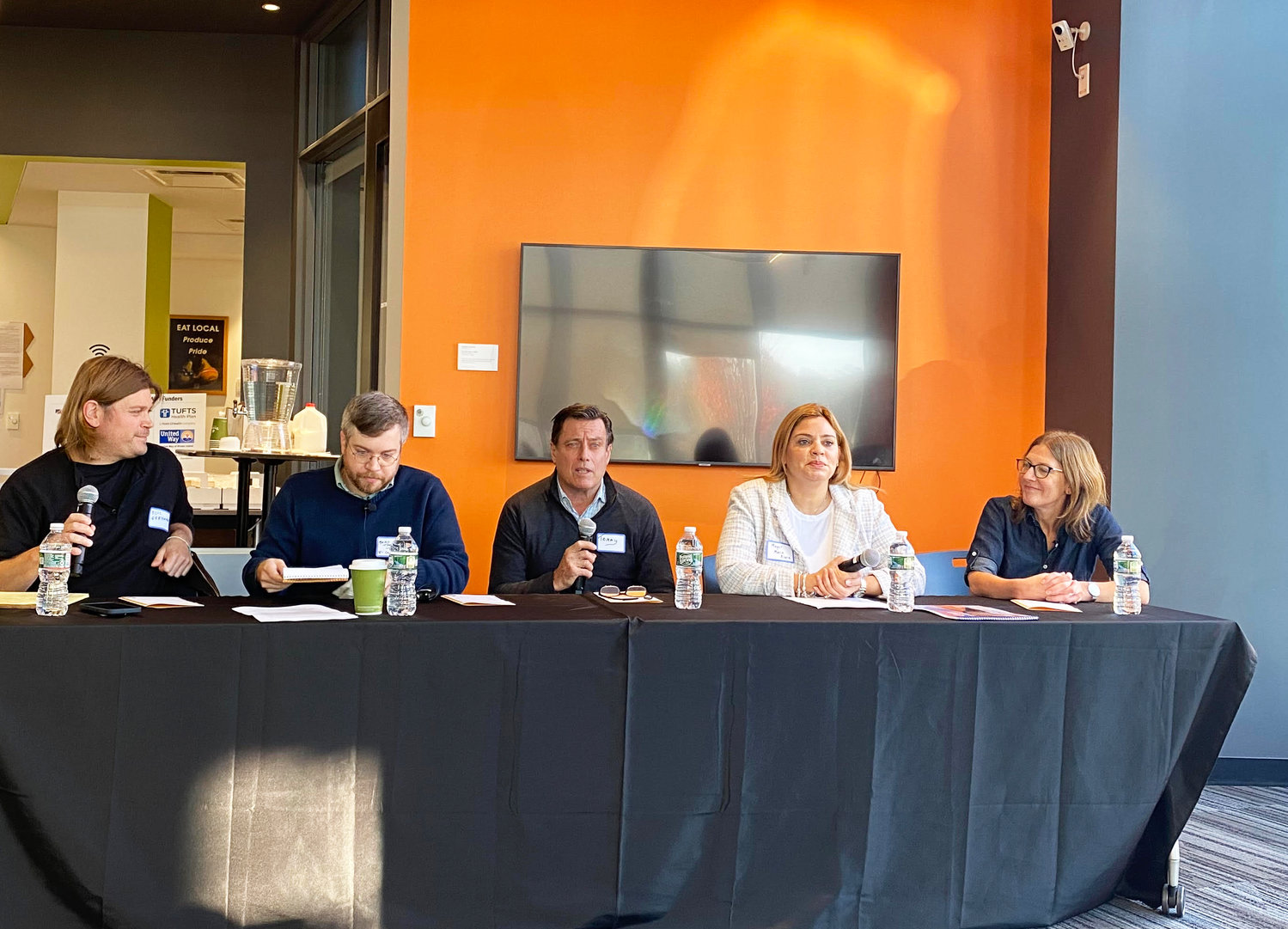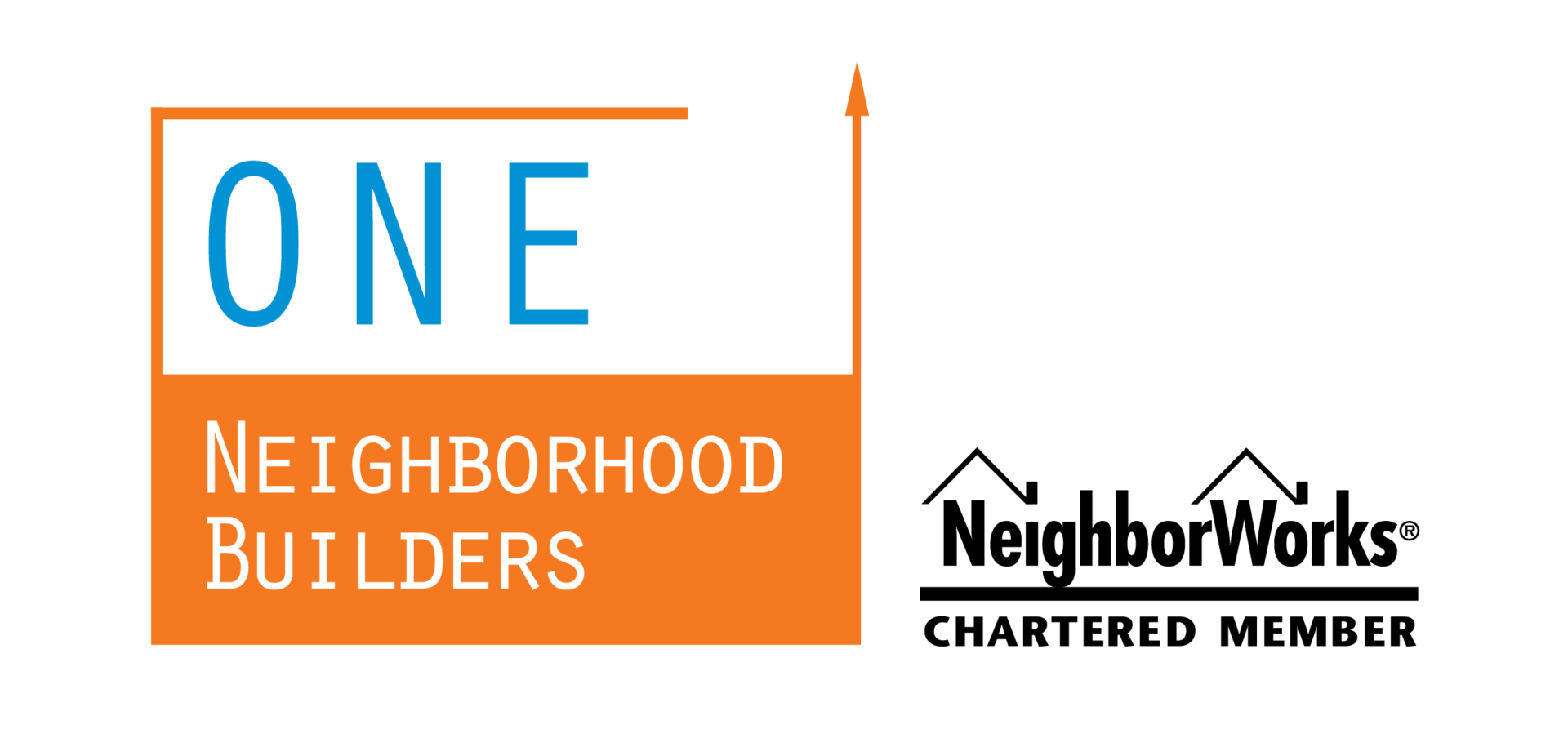
The Fresh Fridays panel on Digital Equity. From left, Bill Bartholomew, Brian Thorn from CommerceRI, Tommy Sheehan from Newport Housing Authority, Central Falls Mayor Maria Rivera, and Jennifer Hawkins, ONE Neighborhood Builders.
By Richard Asinof
ConvergenceRI
PROVIDENCE – At the Wexford building, dubbed 225 Dyer Street, the home of CIC Providence and the Venture Café, which markets itself as an “innovation hub” for Rhode Island, a remarkable series of stories about connectivity were shared on Friday morning, Nov. 4, as part of ONE Neighborhood Builders’ presentation of its case study, “Closing the Digital Divide.”
The program, part of what is known as “Fresh Fridays,” a gathering to share stories of community development, offered a fresh perspective on how to achieve digital equity by overcoming the digital divide.
In less than three years, ONE|NB Connects, a neighborhood-based, wire mesh, free community WiFi internet system has been built in one of Providence’s neighborhoods where poverty and health disparities abound – what the case study called a “bold initiative that had never been done before in Rhode Island.”
Now, that initiative is being replicated in different communities, including Newport and Central Falls, changing the dynamics around access to information and the ways that residents interact with each other.
As Gil Scott-Heron once sang, “The revolution will not be televised,” but the likelihood is that it may now be streamed live, creating digital equity across Rhode Island, throughout many of state’s most challenged neighborhoods.
Jennifer Hawkins, the president and executive director of ONE Neighborhood Builders, a community development corporation headquartered in Olneyville, set the stage for what happened, in her foreword to the case study, “We Knew We Needed To Act.”
“Our neighborhood faced the highest poverty rates in Providence.,” Hawkins wrote. “COVID cases were higher here than anywhere else in Rhode Island. Only 66.1 percent of households in our 02909 ZIP code had internet access, compared with the citywide rate of 78.2 percent. Although people talked about telehealth, many local residents simply did not have the technology to see their doctors remotely.”
Hawkins continued: “I had no idea how to create free internet access for Olneyville, but I was determined to figure it out. This was our moment to make a real difference – and we did so within eight months.”
The success story of ONE|NB Connects, detailed in the case study, explained how the project has served as an inspiration for other communities, including the city of Central Falls and the city of Newport, leading to CommerceRI developing a new program office, “Broadband Strategy,” lead by Brian Thorn.
The first panel featured as part of the Fresh Fridays session, moderated by Bill Bartholomew, the host of The Bartholomew Town podcast, included Central Falls Mayor Maria Rivera, Tommy Sheridan, the resident commission at Newport Housing Authority, CommerceTI’s Thorn, and Hawkins.
The second panel, moderated by Grace Evans from ONE Neighborhood Builders, featured David Marble, president and CEO of OSHEAN, Josh Lee, Wireless Practice Lead, Harbor Networks, and Antonio Rodriguez, the assistant director of Real Estate at ONE Neighborhood Builders.
Closing remarks were provided by Amy Walsh, executive director of Commercial Banking at JPMorgan Chase. Introductory remarks had been given by Keith Kelly, the president of Citizens Rhode Island.
A beautiful day in the neighborhood
The Olneyville Community Profile, detailed in the case study, provided a map of the economic challenges and disparities:
• The median family income is $46.250, compared to $53,659 in Providence and $67,167 statewide.
• The number of individuals living in poverty is 30.2 percent, compared to 25.5 percent in Providence and 13.4 percent statewide.
• The number of children in poverty is 35 percent, compared to 36 percent in Providence and 14 percent statewide.
• The homeowning population is 13.74 percent, compared to 36.1 percent in Providence and 64.5 percent statewide.
• The number of vacant housing units is 29.61 percent, compared to 16.28 percent for Providence, and 3.51 percent statewide.
• The number of households with Internet is 64.9 percent, compared to 81.9 percent in Providence, and 84 percent statewide.
Indeed, as the state has embarked in a strategy of new investments in what has been dubbed “the Innovation District” in Providence, including the construction of a new state public health laboratory ensconced within a commercial real estate development, as a way to jumpstart the biotech/life sciences industry in Rhode Island, the success story of ONE|NB Connects represents a tale of innovation from the ground up, not the top down.
The ONE|NB Connects’ story is filled with numerous teachable moments – if anyone is listening and paying attention – in strategies how best to bridge the equity divide around affordable housing, access to health, and communications.
A continuous learning curve
One of the learning points that the case study drove home was the need for “continuous improvement” of the wire mesh system, upping the speed of transmission and closing the gaps within the initial system. As the case study reported, ONE|NB Connects was able to boost its neighborhood coverage by installing additional relay points, reaching nearly 35 percent of the physical area of Olneyville, up from an initial 25 percent.
As of June of 2022, ONE|NB Connects had grown to an estimated 2,583 unique users of the free WiFI network, surpassing its original goal. “On average, users are connecting to the network for 308 minutes per connection,” the case study reported.
The expanded network now covers about 7 million square feet of Olneyville, increasing the network speed so that downloads and uploads are symmetrical at up to 100 mbps [megabits per second].
Initially, the speeds for ONE|NB Connects were not consistently fast enough for streaming and video conferencing. And, one of the big challenges facing the wire mesh free community WiFi initiative was that there was a sense of general “distrust” by residents of a free program, with many in the community worried about whether they would be charged later on, and the difficulty during the pandemic in reaching out to people, face-to-face.
The total project budget included $475,000 in one-time expenses, including engineering, installation and equipment, with annual expenses of roughly $82,000, including $50,000 for middle-mile fiber fee and $32,000 for system maintenance, firewall, and analytics.
Translated, the potential is there to scale up the ONE|NB Connects to other communities across Rhode Island, with the understanding that every community is different, with unique geographies and challenges.
Funders and partners
The project’s funders represented a cross-section of Rhode Island’s corporate leaders, including: Bank Newport Foundation, BayCoast Bank Foundation, Blue Cross Blue Shield of Rhode Island Foundation, Citizens Bank Foundation, HarborOne Bancorp, Integra, LISC Rhode Island, NeighborWorks America, Tufts Health Plan Foundation, United Way of Rhode Island, the Washington Trust Foundation, the R.I. Department of Health/CARES Act, and the State of Rhode Island Community Development Block Grant Funds
The partnership responsible for building ONE|NB Connects included: OSHEAN, a nonprofit service provider in Rhode Island; Harbor Networks, a Massachusetts firm that is a communications systems integrator; COMMScope, a North Carolina company that provided wired and wireless networking equipment and software; Cambium Networks, an Illinois-based company, is a provider of wireless infrastructure; American Tele-Connect Services, a Rhode Island-based company that offers customized communitcations solutions; LinkyFI, a software platform providing business customers with insights about their WiFI systems; and Brave River Solutions, which serves as One Neighborhood Builders’ information technology consultants.


